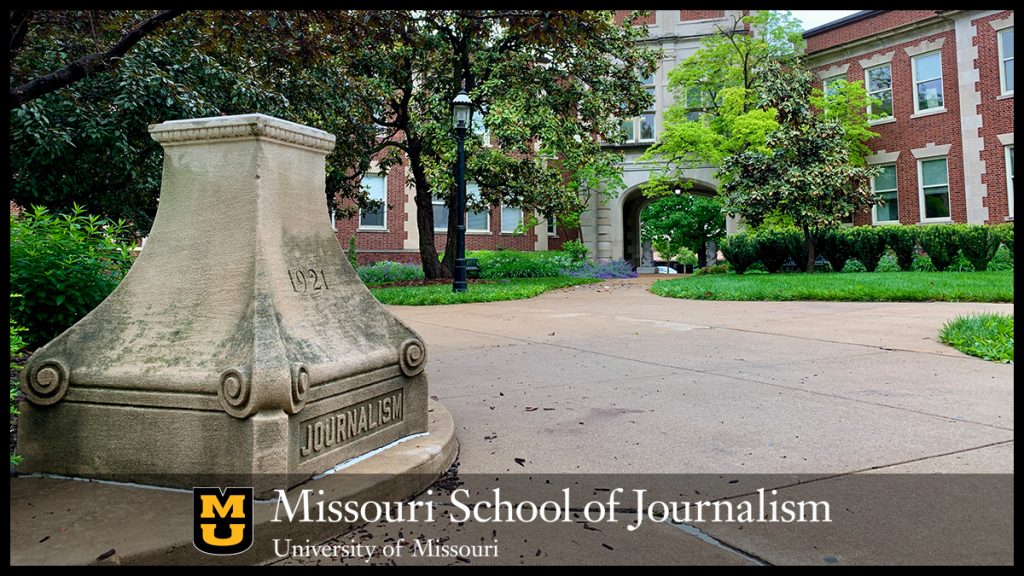Change in journalism school curriculum leads to Strategic Communication classes offered over summer for first time

By Abby Werner
Columbia, Mo. (Sept. 22, 2021) — For the first time ever, three strategic communication classes were offered over the summer: JOURN 2200 Audiences and Persuasion, JOURN 4200 Principles of Strategic Communication, and JOURN 4952 Strategic Communication Research.
This change was prompted by the restructuring of the School of Journalism curriculum. With this new shift, first-year students are getting more exposure to the Adobe Creative Suite and second-year students are gaining experience with research methods in Audiences & Persuasion course.
“With the new curriculum coming in it got the strategic communication faculty thinking that if we were ever going to make significant changes to the way we did things, now was the time,” said Jon Stemmle, professor and faculty chair of Strategic Communication. “So, as a faculty, we really thought about the students and the learning experiences we provide and looked at it from the view of if we were to create a curriculum for Strategic Communication from scratch, what would that look like.”
The biggest modifications for the new strategic communication curriculum include JOURN 4204 Introduction to Strategic Writing & Design. The course is moving to an 8-week model and will be offered in Summer 2022. Additionally, the class will no longer have labs, and learning will take place online in a flipped classroom model. In-person class time will focus on skills and creating a mini advertising campaign. The Strategic Communication Research course is also moving to an 8-week format. The course focus is shifting to the key methods that students use in their field and in their capstones — surveys, interviews and focus groups — along with the theory and methods behind them.
“Students can now see the whole research process from beginning to end,” said Shelly Rodgers, professor and the Maxine Wilson Gregory Chair in Journalism Research. “Not only does it more thoroughly prepare students for their capstones, it gives them real-world experience that puts them ahead of the competition once on the job market.”
This shift to having the two courses (Introduction to Strategic Writing & Design and Strategic Communication Research) go from 16-weeks to 8-weeks allows students to take them simultaneously for half the semester and be free the other half, or to separate them with one the first 8-weeks and one the second 8-weeks over the course of the semester.
“The 8-week class forced students to stay focused and really invest in the class,” said Associate Professor Jim Flink, who taught the summer section of the Audience & Persuasion course. “The amount of work that was required each week was substantial. But I was super pleased with how students brought it all together and I thought their final presentations were well thought out. They showed they grasped the importance of understanding your audience by really cementing things in your research, seeing what that research tells you about the audience and what it tells you about how you should strategically develop your outreach.”
Each of these courses took nearly two years to create from conceptualization to construction. The summer was a test-run for several of these to make sure that they worked the way they were expected to.
“The student feedback I’ve received has been positive, so I think that investment of time paid off,” said Associate Professor Holly Higginbotham, who spearheaded the redesign of the Principles of Strategic Communication course (JOURN 4200). “I may tweak a few assignments, but I feel like the course ran really smoothly for this first summer.”
All three of the classes offered over the summer (J4200, J4204 and J4952) are required for Strategic Communication majors to graduate, so taking one or two of these classes during the summer semester will help students get ahead or even graduate early. Other students, like junior Grace Chapo, take summer classes to make their fall and spring semesters more flexible.
“I took JOURN 4200 as a summer class because I am planning on studying abroad in the spring semester,” Chapo said. “In order to graduate on time and to maintain a steady course load during the academic year, I decided it would be best to take it over the summer.”
To accommodate students who were doing internships or working over the summer, all three classes were taught online and asynchronously. This meant students didn’t need to be in Columbia or on-campus.
“We always have to make sure that what we are doing is empowering our students,” Rodgers said. “We have to make our expectations clear, so they are challenged but can also succeed.”
And the summer classes are sticking around. Moving forward, students will have the option to take JOURN 2200, JOURN 4200, JOURN 4204 and JOURN 4952 during the summer semester.
Updated: September 22, 2021